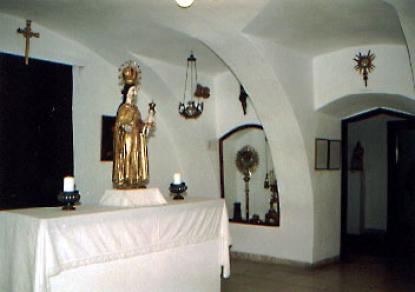2024. November 22. Friday
Sárospatak Gallery - Sárospatak
|
|
Address: 3950, Sárospatak Szent Erzsébet tér 14.
Phone number: (47) 511-012
Opening hours: Tue-Sun 10-16
|
Museum tickets, service costs:
|
Ticket for adults
|
400 HUF
|
|
|
Ticket for students
|
200 HUF
|
|
|
Ticket for pensioners
|
200 HUF
|
The town of Hegyalja was pretty much saved from the Turkish. Its development and flourishing was the result of its viniculture. In the 18th century rich interiors of churches were created of the prosperity of the town. The decadence of the region in the 19-20th century and the change in taste did not favor the Baroque heritage. Antal Kuklay tried to save some of the findings. Thanks to his work, the museum today holds a rich material of Baroque ecclesiastical art and liturgical life of Hegyalja.

After the disintegration of some sects in 1950, many of the relics disappeared. The pictures of the Social Missionaries of Szikszó, shrines from the monastic quarters of the Piarists of Sátoraljaújhely, and valuable liturgical objects were saved by the order of Gödöllő and Jászóvár. These are all part of the collection.
As the result of the liturgical reforms of the second Synod of the Vatican, several furnishings and liturgical objects lost their functions and were removed from the churches. These objects are also kept in the museums.
Among the unique objects, we can mention the sources of the work on local history: the history of houses formerly kept at the parishes. Documents by Zsigmond Rákóczi and György Rákóczi I were donated to the collection. The compilation takes care of the heritage of István Demeter priest poet as well.

After the disintegration of some sects in 1950, many of the relics disappeared. The pictures of the Social Missionaries of Szikszó, shrines from the monastic quarters of the Piarists of Sátoraljaújhely, and valuable liturgical objects were saved by the order of Gödöllő and Jászóvár. These are all part of the collection.
As the result of the liturgical reforms of the second Synod of the Vatican, several furnishings and liturgical objects lost their functions and were removed from the churches. These objects are also kept in the museums.
Among the unique objects, we can mention the sources of the work on local history: the history of houses formerly kept at the parishes. Documents by Zsigmond Rákóczi and György Rákóczi I were donated to the collection. The compilation takes care of the heritage of István Demeter priest poet as well.
